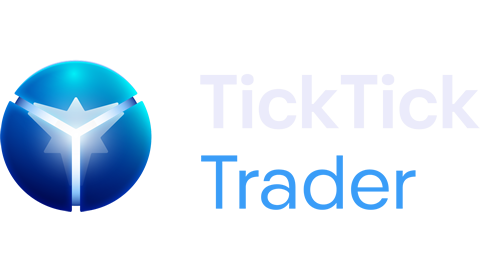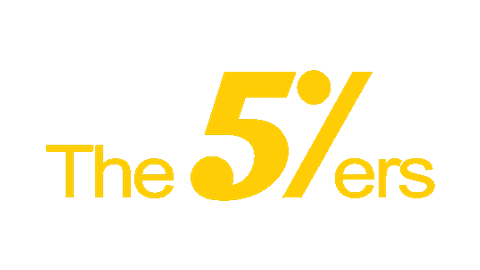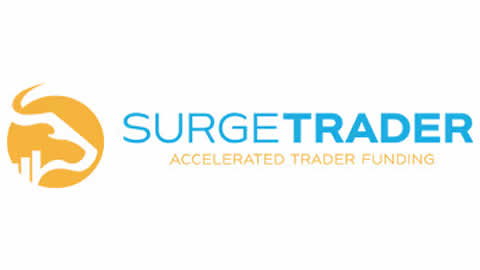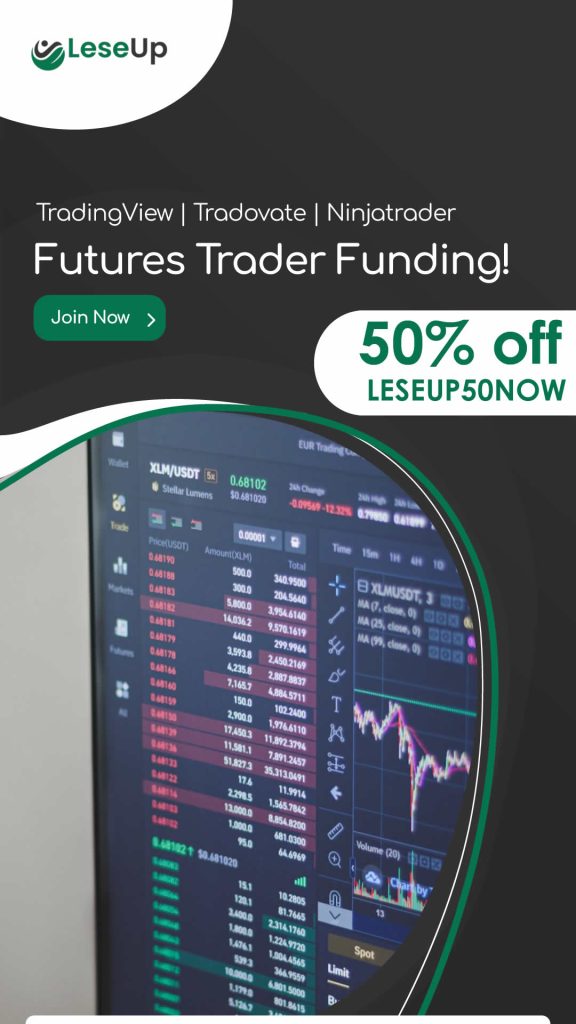Available Markets for Funded Trading
Welcome to the world of funded futures trading. If you’re a new trader, understanding the available markets is a crucial first step. Futures trading involves buying and selling contracts that oblige the buyer to purchase a specific asset, or the seller to sell it, at a predetermined future date and price. With funded trading, you trade with a firm’s capital, reducing personal financial risk while enabling potential profits. This guide aims to familiarize you with the various funded futures trading markets and provide necessary insights to help you navigate your trading journey.
Understanding Funded Futures Trading
Funded futures trading, often termed as proprietary trading, involves trading on markets using a firm’s capital rather than your own personal funds. This concept allows individuals to engage in trading without tying up substantial personal capital, which can be particularly beneficial for new traders who may not have extensive financial resources. It also offers the opportunity to profit from successful trades, often through a profit-sharing arrangement with the funding firm.
In the futures market, traders deal with a wide array of products – from commodities to financial instruments. Trading futures contracts allows traders to speculate on the price movement of the underlying asset, providing an opportunity to profit whether the market is rising or falling. Understanding this dynamic can help you grasp the potential and the risks of funded futures trading.
Overview of Available Markets for Funded Futures Trading
Now that you understand the basic concept of funded futures trading, let’s delve into the available markets. Broadly speaking, futures markets can be categorized into three main types: commodities, financials, and indices.
Commodities Market: Commodities are physical goods like gold, oil, and grains. These are often traded on exchanges like the Chicago Mercantile Exchange (CME) and the Intercontinental Exchange (ICE). Commodities can be highly volatile, offering opportunities for significant profits but also posing substantial risks.
Financials Market: Financial futures involve contracts based on financial instruments like bonds and interest rates. These are traded on various exchanges, with some of the most popular contracts including U.S. Treasury futures and Eurodollar futures.
Indices Market: Futures on indices involve contracts based on stock market indices like the S&P 500 or the Dow Jones Industrial Average. These futures allow traders to speculate on the overall direction of the stock market.
Each of these markets offers unique opportunities and challenges. As a trader, it’s essential to understand these differences and choose the market that best aligns with your trading style, risk tolerance, and financial goals.
Minimum Trading Days: 0 days. 10% Return
Minimum Trading Days: 0 days. 10% Return Show Less
Deep Dive into Specific Markets
Commodities Market
Commodities futures trading is one of the oldest forms of futures trading. Commodities are tangible assets such as gold, oil, grains, or livestock, among others. When trading commodities futures, you’re speculating on the future price of these goods.
Different commodities exhibit different levels of volatility and liquidity. For instance, oil futures are known for their high volatility due to geopolitical factors and supply-demand dynamics. On the other hand, gold futures are often considered a safe haven during market turbulence. Grains like corn and wheat also have their own unique market influences, such as weather patterns and global demand.
Financials Market
Financial futures are contracts based on financial instruments such as interest rates, currencies, and bonds. For example, traders might speculate on the future direction of US Treasury bond prices or anticipate shifts in the Eurodollar interest rates. These markets require an understanding of macroeconomic factors and monetary policy, as these can significantly influence the value of financial instruments.
Indices Market
Index futures are contracts based on stock market indices, such as the S&P 500 or the Dow Jones Industrial Average. These futures contracts offer a way to speculate on the overall direction of the stock market without buying or selling individual stocks. Index futures can provide a useful hedge for portfolio risk or a way to profit from broad market movements.
Factors to Consider when Choosing a Market for Funded Futures Trading
- Choosing the right market for your funded futures trading can be a complex decision. Here are some factors to consider:
- Volatility: Markets with high volatility can offer substantial profit opportunities, but they also carry higher risk. Assess your risk tolerance before diving into highly volatile markets.
- Liquidity: Liquid markets make it easier to enter and exit trades at desirable prices. Consider trading in markets with high liquidity to minimize the risk of slippage.
- Knowledge and Interest: Understanding the dynamics of the chosen market is essential. Choose a market you’re interested in and willing to study in depth.
- Trading Hours: Different markets have different trading hours. Make sure the market’s operating hours align with your schedule and lifestyle.
- Funding Firm’s Rules and Restrictions: Some funding firms may have specific rules or restrictions regarding the markets you can trade in. Always check these before you begin trading.
Strategies for Success in Funded Futures Trading
As a new trader entering the funded futures trading markets, it’s important to arm yourself with effective strategies for success. Here are a few to consider:
Develop a Trading Plan: A well-crafted trading plan includes your trading goals, risk tolerance, and specific criteria for entering and exiting trades. Stick to your plan and avoid making decisions based on emotions.
Focus on Risk Management: Protecting your capital should be your top priority. Use tools like stop-loss orders to limit potential losses on your trades.
Continuous Learning: The financial markets are always evolving. Keep yourself updated with market trends and economic news. Participate in training courses and webinars to enhance your trading knowledge.
Backtesting: Before implementing a trading strategy, it’s vital to test it against historical market data. Backtesting can help you understand how your strategy would have performed in the past and adjust it accordingly.
Start Small and Scale Up: As a new trader, start with smaller trades and gradually increase your trading size as you gain experience and confidence.
Navigating the Challenges of Funded Futures Trading
Trading platforms play a crucial role in the success of a futures trader. They provide the necessary tools, charts, and order execution capabilities to analyze the markets and execute trades efficiently. Let’s explore three popular trading platforms often utilized by funded futures traders:
NinjaTrader is a robust trading platform widely favored by futures traders for its advanced features and flexibility. It offers a comprehensive range of tools for charting, analysis, and strategy development. With its powerful order execution capabilities, traders can enter and exit trades swiftly. NinjaTrader also provides access to a wide selection of third-party add-ons and indicators, allowing traders to customize their trading experience according to their unique preferences.
TradingView is a popular web-based platform known for its intuitive interface and extensive charting capabilities. It offers a wide range of technical analysis tools, drawing tools, and indicators that assist traders in analyzing the futures markets effectively. TradingView allows traders to collaborate and share ideas with a vibrant community of traders. Additionally, it provides the option to create and backtest trading strategies, making it a versatile platform for both beginners and experienced traders.
Tradovate is a user-friendly trading platform designed specifically for futures trading. It offers an intuitive and customizable interface, making it accessible to traders of all experience levels. Tradovate provides advanced charting features, real-time market data, and seamless order execution. The platform also integrates with popular futures trading brokers, allowing traders to execute trades directly from the platform. With its simplicity and reliability, Tradovate is an excellent choice for new traders looking to enter the funded futures trading arena.
When selecting a trading platform, consider factors such as ease of use, available features, compatibility with your trading style, and the platform’s reputation for reliability and customer support. Exploring demo versions of these platforms can help you determine which one aligns best with your trading needs.
By utilizing powerful trading platforms like NinjaTrader, TradingView, and Tradovate, you can gain a competitive edge in the funded futures trading markets and optimize your trading experience.
Entering the funded futures trading markets can be an exciting journey. Whether you choose to trade commodities, financials, or indices, the opportunities are vast. Remember, successful trading is not just about making profitable trades, but also about managing risks and continuously learning. As you step into this dynamic world, equip yourself with knowledge, stay updated with market trends, and always adhere to your trading plan. The path to becoming a successful futures trader might be challenging, but with the right approach, it’s certainly achievable.







